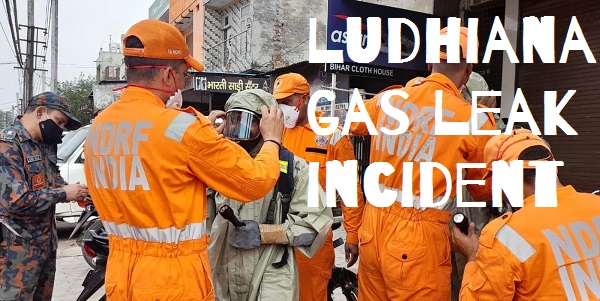Ludhiana Gas Leak Incident- Highlights, Causes & Necessary Steps

From Current Affairs Notes for UPSC » Editorials & In-depths » This topic
IAS EXPRESS Vs UPSC Prelims 2024: 85+ questions reflected
The Ludhiana gas leak incident is yet another addition to the growing list of disasters due to poor waste management practices. The fact that such preventable casualties continue to occur in a country that prides itself on its Swachch Bharat success is a cause for concern.

What happened in Ludhiana?
- The Giaspur region of Ludhiana, Punjab, is a densely populated area which also has a number of factories. On April 27th, a gas leak led to the death of 11 people and hospitalization of 4 others.
- The post-mortem report of the victims concluded ‘inhalation poisoning’ to be the cause of death.
- The authorities suspected the poisonous gas to have emanated from a partially open manhole. The gas had spread to the homes and shops in the vicinity.
- The National Disaster Response Force used air quality sensors to understand the situation. The sensors showed high levels of hydrogen sulphide in the area.
What caused this incident?
- Hydrogen sulphide is a known neurotoxin i.e. substance that adversely affects the nervous system. Even a single breath of this pungent gaseous substance could be fatal.
- It is possible that some acidic waste in the sewer reacted with other gases like methane and carbon monoxide to produce this toxic gas.
- Notably, untreated waste getting into the city’s sewer network has been a longstanding concern for Ludhiana’s municipal authorities.
- The fact that sufficient gas was formed to kill several people in the area implies that the sewerage system was in serious need of proper cleaning.
What is the way ahead?
- The Ludhiana gas leak incident is only the latest in a long list of waste-related calamities in the country, which includes toxic material dumped in Surat and a mountain of garbage that caught fire in Kochi.
- There is a pressing need for Indian city authorities to step up efforts to prevent such unfortunate incidents:
- Strict enforcement of environmental regulations
- Address the shortage of skilled personnel in pollution control boards and committees
- Regular inspections and maintenance of sewerage networks
- Ensure proper ventilation in sewerage system to prevent gas build-up
- Promote clean technologies to reduce generation of hazardous wastes
- Conduct awareness campaigns on the dangers of dumping hazardous wastes in open sewers and the importance of proper disposal
- Multi-stakeholder collaboration in developing environmental policies and regulations
Conclusion:
The Ludhiana gas leak should serve as a wake-up call for all of us to take proactive measures to prevent environmental disasters. By enforcing regulations, maintaining sewerage networks, promoting clean technologies, raising public awareness, and collaborating with stakeholders, we can create a cleaner and safer environment for ourselves and future generations.
Practice Question for Mains:
Discuss the causes and consequences of the Ludhiana gas leak and suggest measures to prevent such incidents in the future. What role can the government, industries, and citizens play in ensuring the safety of the environment and public health? (250 words)
If you like this post, please share your feedback in the comments section below so that we will upload more posts like this.

